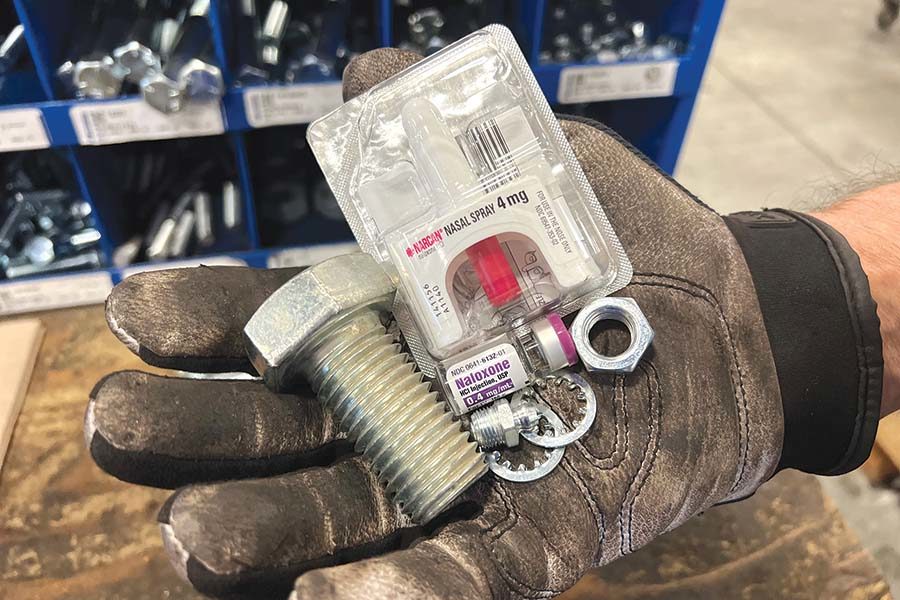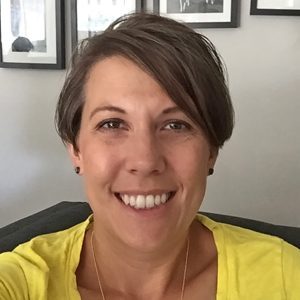
Home » Campaign underway to get life-saving medication in everyone’s hands
Campaign underway to get life-saving medication in everyone’s hands

February 10, 2023
Overdose prevention could be viewed as the new CPR: the Benton-Franklin Health District wants everyone to be prepared and know how to help anyone at any time.
The BFHD is actively marketing its “Carry a Second Chance” campaign in the hope people will equip themselves with naloxone, an emergency medication that could reverse an overdose. It is available without a prescription in Washington state.
“It is my goal that everybody carries naloxone in their purse and their wallet and their car wherever they can carry it,” said Shelley Little, a public health nurse with the Benton-Franklin Health District for the past 22 years.
“Think about your grandparents who maybe have taken some type of pain pill and they’re on another type of medication that interferes with that, or how older people are sensitive to alcohol, and they drink the regular beer they’d have while on pain pills for a sore back. It could be that population who overdoses.”
The health district is moving away from using the word ’opiate’ because the nation’s overdose epidemic is not just opiates, Little said.
“People are dying even more now with lots of other drugs, too. So, it isn’t a single drug epidemic, and any drug could be involved,” she said.
Naloxone also may be known by its brand name, Narcan, and is available in spray or injection form.
The medication typically costs $60 to $125, depending on insurance coverage, but also may be free for some populations, including those on Medicaid.
It is not available directly from the health district, despite the standing order to provide it without a prescription, and may be obtained from a pharmacy or through the Washington State Narcan Mail Order Program, an online order system which can be shipped by providing only a name, address and payment, if needed.
It is also available at the Blue Mountain Heart to Heart (BMH2H) clinic at 911 S. Auburn St., Kennewick.
A safe drug
While naloxone only works to reverse the effects of opiates, people are still encouraged to use it if any overdose is suspected.
“Let’s say it’s not an opiate. Let’s say it’s not fentanyl. Let’s say it’s not any of those; it will do no harm,” Little said. “It will do no harm to a pregnant person, and it will do no harm to a child. This is a very safe drug.”
Washington’s Good Samaritan Law also protects people from prosecution for drug possession if they call 911 to save a life while illicit drugs are still on the scene.
“It’s completely legal to take (naloxone), and it’s completely legal to use it,” said Everett Maroon, executive director of BMH2H. “As opposed to other rescue devices, like defibrillators, you won’t hurt anybody if you use it on someone who’s not actually overdosing on a narcotic. It just won’t do anything for them.”
Tracking overdoses by industry
Overdose deaths are tracked by the BFHD and reported on a dashboard, thanks to a $75,000 Overdose Data to Action grant from the Centers for Disease Control. The data dashboard is similar to ones used to report Covid-19 infections and deaths, and suicide rates.
The data shows overdose deaths doubled between 2019-20 in Benton and Franklin counties.
Studying the vital records death certificates provided the BFHD with new insights into which populations are most susceptible to an overdose, including certain occupations and industries. Little noted a 100% increase in overdose deaths in the construction industry alone.
“We could start to look at why this construction worker trend has been the highest growing population of construction, labor and trades,” Little said. “In just one year, the overdose death rate for restaurant and food service workers went up 300%. And it was like, ‘Oh my gosh,’ these are identifiable occupations where people are working at the time of their deaths.”
Armed with that knowledge, outreach efforts began in earnest. Little said when initial strategies didn’t seem to be making a sizable impact, the BFHD shifted to use grant money toward a media campaign, resulting in “Carry a Second Chance.”
One of its first calls was to the Home Builders Association of Tri-Cities (HBA) because the highest incidence of overdose deaths for all occupations since 2016 has been those in the construction, labor and trade industry. Little found the HBA was immediately receptive and agreed to include campaign flyers in all billings, totaling about 300.
The health district already had the infrastructure in place to make regular connections with those in the food service industry through annual food establishment inspections.
“If you’re just going to do a routine inspection, we put a packet together for the environmental health specialist to hand to the purveyor to say, ‘Hey, these are your employees, this is what’s happening, here’s the flyer, here’s how you get it.’ ” After launching this outreach effort last September, it’s expected every food establishment will be reached by this fall.
Little is so committed to the campaign, she has her own guerilla marketing strategy: She carries the flyers with her to tape up in restroom stalls when she’s off the clock.
“I don’t know if they get torn down, but at least anybody could hit that QR code. The whole thing is, we want people to know this is available,” she said.
Naloxone’s local impact
Maroon’s organization first began providing naloxone in late 2014 and saw 18 reversals of an overdose in the first year of use.
Last year, that number jumped to 638 across its three offices that provide the medication: Tri-Cities, Walla Walla and Clarkston.
“Part of that increase is better penetration of naloxone to people who are likely to overdose,” Maroon said. “But the other thing going on is that we’ve seen a real nose dive in terms of toxicity of the illicit drug market since Covid.”
Maroon is referring to the increase in fentanyl, a purely synthetic drug, versus heroin.
In 2022, BMH2H gave out 915 naloxone kits in the Tri-Cities and tracked 164 reversals of an overdose.
Reducing the stigma
With extremely limited harm reduction programs in Benton and Franklin counties, it’s BFHD’s goal to both make people aware of the benefits of carrying naloxone while also reducing the overall stigma associated with addiction.
“It really helps people understand this is a chronic, relapsing disease similar to diabetes,” Little said. “So many people get out of control with their diabetes where they end up with a Spudnut or three Cokes and their insulin goes up. Sometimes they just need more insulin, and sometimes they end up in the hospital, and there’s no stigma with that. Substance use disorder is the same, except it really has its foundation in loneliness and isolation. The lack of community connection is what makes addiction so stigmatized. It’s ‘those’ people. They’re in ‘this’ alley. It’s ‘that’ homeless encampment. It’s ‘other’ people. We don’t see them as somebody’s mother, brother or friend.”
Using the tagline, “Suspect no one, expect anyone, respect everyone,” the goal is to break down communication barriers as people may find the stigma is often worse than the addiction.
“It’s really about destigmatizing this disease and getting naloxone in people’s hands so people can live longer. I think most people who have the disease of addiction do not want to die. They want to live, so the longer you can keep someone alive, the more time you’ll be able to spend time with them,” Little said.
Roughly 500 naloxone kits have been ordered by Benton and Franklin county residents through the state’s online program since the campaign launched in August.
“We are hopeful to expand awareness of the campaign this year, as well as increase access of naloxone to community agencies interacting with populations at a higher risk of overdose,” said Carla Prock, senior manager, Healthy People & Communities for BFHD.
“I think there is this misnomer (addiction) is a suicide thing, and people know they’re at risk every time they pick up an illicit drug. But it’s not that way,” Little said. “Some people are dependent on it. They are not looking to kill themselves, they’re looking to cure their disease. Diabetics take insulin because their sugars are high and they’re starting to sweat and feel agitated. These people are using illicit drugs or regular drugs because they need them. They want to be alive.”
Go to: carryasecondchance.com.
Local News Health Care
KEYWORDS february 2023





